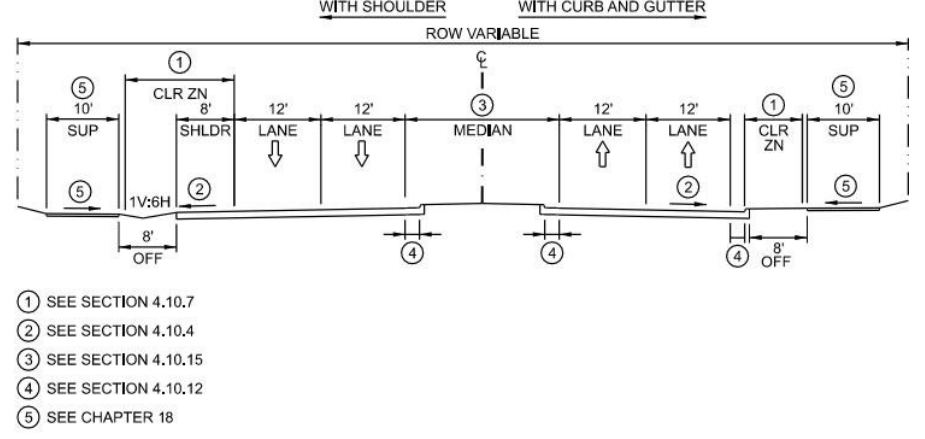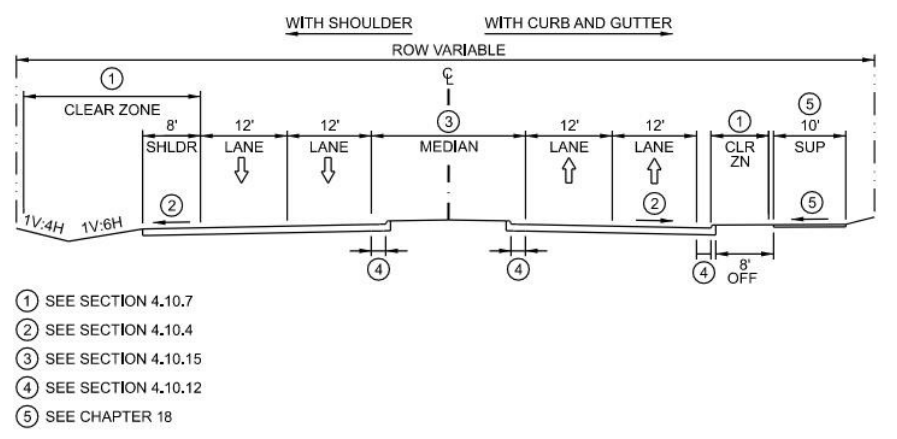7.4 Suburban Design Elements
7.4.1 General Characteristics
Arterials in suburban areas are similar to rural arterials in that they generally have higher operating speeds and carry multiple through travel lanes. However, due to the proximity of urban and rural town arterials, they may also have characteristics of these contexts as well. For example, these types of arterials may maintain high speeds (a rural characteristic) while utilizing curb and gutter to facilitate drainage (an urban and rural town characteristic).
Special care and attention must be given to transitioning the operating speed from high to low. This should be communicated to drivers by more than just speed limit sign changes.
Design features that gradually change from the rural cross section to rural town or urban cross section should be used to provide visual cues and positive guidance.
This may include gradual elimination or narrowing of the shoulder, narrowing of the travel lanes, use of curb and gutter, and center raised medians.7.4.2 Typical Section
Suburban arterial example typical sections are shown in
through
below. The geometric dimensions shown in these sections may be adjusted in accordance with
.
For suburban roadways with more urban characteristics,
provides guidance on selecting the number of through lanes based on volume and refers to the
for more details. For suburban roadways with more rural characteristics,
lists the preferred cross-section for various combinations of volume, driveway activity, and truck percentage.
.png/_jcr_content/renditions/original)
Figure 7-10: Suburban Typical Section – Two-Way Left Turn Lane (TWLTL)
_with_Constrained_ROW.png)
Figure 7-11: Suburban Typical Section -Two-Way Left Turn Lane (TWLTL) with Constrained ROW

Figure 7-12: Suburban Typical Section – Raised Median

Figure 7-13: Suburban Typical Section – Raised Median with Constrained ROW